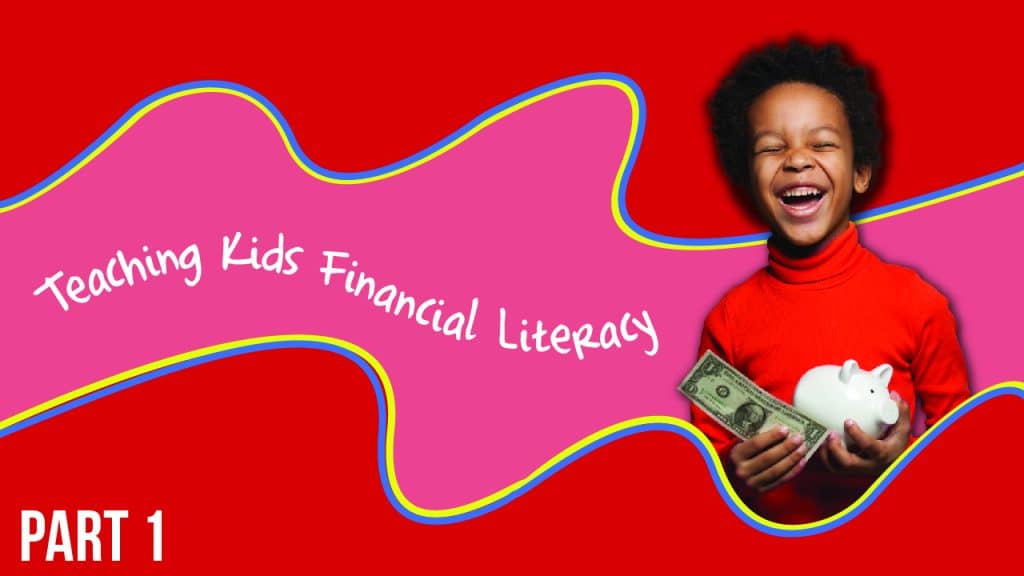Teaching Financial Literacy During National Credit Union Youth Month, Part 1

Welcome to part one of the National Credit Union Youth Month blogs! Every April, credit unions around the country celebrate this month as a way to get kids involved in finances. Over the next two weeks, Nichole Coyle, Certified Financial Planner™, explains how to get your kids excited about saving and budgeting.
Teaching children about money can help set them up for success as they become more independent and start their adult lives. But where and how do you start?
School-age to preteens:
Do your children receive money for their birthdays or holidays? Have you started some monetary reward system with them? Even if they only have a small amount of cash they receive from time to time, it’s still important to teach them about basic money principles.
Try this fun activity to allocate the money children receive. For this teaching point, use see-through containers (so kids can easily see what’s inside).
Supplies Needed:
- Three clear jars (like mason or pickle jars).
- A label for each jar using any supplies you have like chalk paint, printed labels, colored duct tape, a sharpie marker, or a piece of construction paper. Get creative with it!
Next, label the jars: Give, Save, Spend.
Anytime your child receives money, help guide them on how to split up those funds. The decision on how to divide the money is up to you. There’s no right or wrong way to do it. This simple act can bring up great conversations with your kids.
Talk about Giving Money during National Credit Union Youth Month
When you put money in the give jar, discuss the importance of giving to others in need. Maybe you donate a percentage to your place of worship, a non-profit, or another cause. Talk about where your own “give” money goes and why.
This teaches your children about generosity. Share a story with your child about an impact you’ve made or a particular cause that you feel good about helping.
Talk about Saving Money
We live in a world of instant gratification, which isn’t always financially healthy. The save jar is an excellent opportunity to talk to them about delayed gratification.
Teaching kids about saving up for something they want could help them avoid issues with debt later in life. You could attach a photo of what your child is saving to buy to their jar, so every time they put money into that jar, they are reminded of why they are saving that money and not spending it immediately on something else.
Each month, you can also have them take their coins into your local FFCCU branch to deposit into their Sparky’s Kids Club Account. Depending on your child’s age, you can also discuss interest when making deposits. This will help them understand why the money they save should go to a bank versus just sitting in their save jar.
Let’s say your child keeps a dollar a day in their save jar. You could tell them you are going to put 10 cents in a day as a form of earning interest on their money. Banks do this — essentially giving “free money” to your account when you save money.
Talk about Spending Money
Let them choose how they want to spend the money in their spend jar. Tell them how much they must pay and deduct each item’s cost from that total. This helps kids learn to plan for their purchases ahead of time and the value of a dollar.
Once your child decides what they want to spend their money on, have them physically take the money from their jar and pay for it in the store.
Depending on their age, you can explain a little about sales tax. They may ask why the $5.00 toy they came to buy cost $5.34 — which would be a good time for a simple explanation on taxes.
Using this jar method to teach young kids about basic money principles can help set them up to be responsible and successful in managing their money as they get older.
Teach Your Kids Now During National Credit Union Youth Month
While learning about money is not usually a child’s main priority, it is important to go over the basics while young. These skills will transfer into their teenage years and help them grow in their financial literacy.
Check-in next week for part two of this blog series discussing how to start your preteen and teen strong with financial literacy. If you have questions about your financial matter in the meantime, don’t hesitate to contact me today!
Nichole M. Coyle,
CERTIFIED FINANCIAL PLANNERTM
20333 Emerald Pkwy, Cleveland, OH 44135
216.621.4644 x1607
Securities and advisory services offered through Cetera Advisor Networks LLC, member FINRA/SIPC, a Broker-Dealer, and a Registered Investment Advisor. Cetera is not affiliated with the financial institution where investment services are offered or any other named entity. Investments are: Not FDIC/NCUSIF insured * May lose value * Not financial institution guaranteed * Not a deposit * Not insured by a federal government agency.
Posted In: Saving, Sparky's Kids Club, Tips For Managing Finances




